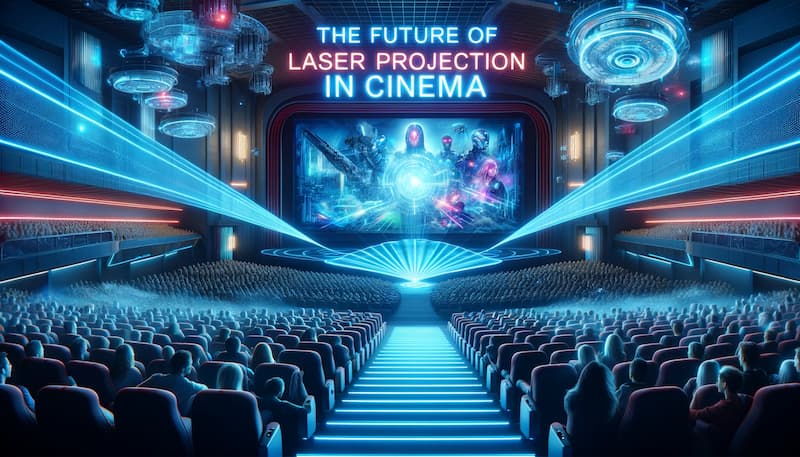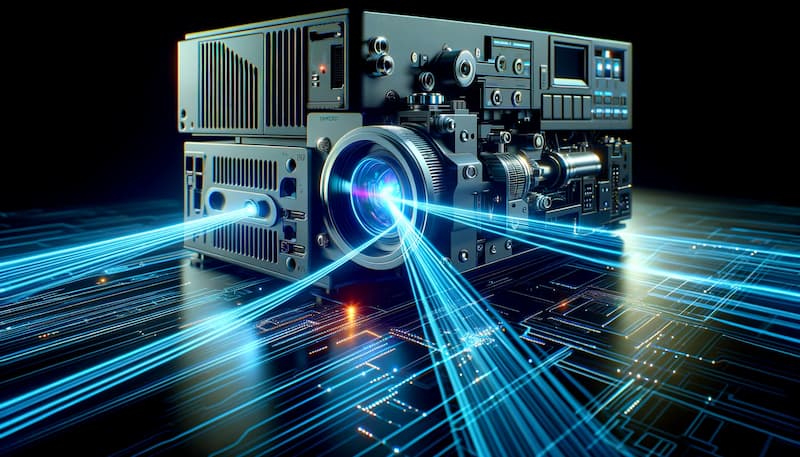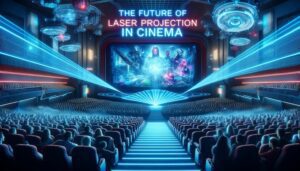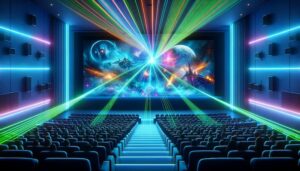
In the constant quest for excellence in the film industry, laser projection technology emerges as a beacon of innovation, offering unprecedented image quality that redefines the movie-watching experience. CMRA Consulting Services, always at the forefront, leads this technological revolution, ensuring that cinemas in the United States and South America can offer amazing visual experiences to their audience.
Laser Projection Technology: An Overview
Laser projection technology has radically transformed cinema, providing unparalleled image quality that elevates the viewing experience to levels never before reached. As we move into 2024, this technology continues to evolve, driven by significant advancements in optical and digital engineering. This section provides a detailed and up-to-date overview of laser projection technology, its working principles, advantages, and how it is redefining the standard for movie projection in the modern world.
Laser projection is based on the emission of laser light to create images. Unlike traditional projectors that use xenon or UHP (Ultra High-Performance) lamps, laser projectors generate light through laser diodes. This light is modulated through DMDs (Digital Micromirror Devices) in DLP (Digital Light Processing) projectors, or through LCDs (Liquid Crystal Displays) or LCoS (Liquid Crystal on Silicon) in other types of projectors, to create the final image projected on the screen.

Laser projection offers multiple advantages over traditional projection technologies:
Heading into 2024, laser projection technology has seen several key innovations that have further expanded its capabilities and applications:
The introduction of laser projection has set a new standard in the film industry, not only in terms of image quality but also in the operation and sustainability of cinemas. Cinema operators, with the help of leading companies like CMRA Consulting Services, have been able to upgrade their halls with this advanced technology, ensuring they remain competitive in an ever-evolving market.
Laser projection has not only improved the viewer’s experience but has also opened new possibilities for cinematic storytelling, allowing filmmakers to explore new visual and narrative techniques. As we move forward, this technology is expected to continue evolving, offering even more opportunities to enrich the art of cinema.
Adopting laser projection represents a commitment to quality, efficiency, and innovation. As we delve deeper into 2024, it’s clear that laser projection is not just the future of cinema; it’s the present, redefining what’s possible in the creation and enjoyment of cinematic experiences.

The implementation of laser projection transforms the cinema hall into a space where the magic of stories comes to life with clarity and depth never before seen. The audience can fully immerse themselves in each scene, appreciating fine details and vibrant colors that were previously lost. Movies that make intensive use of visual effects or are projected in high-definition formats benefit greatly from this technology, offering viewers a truly immersive experience.
CMRA Consulting Services has been instrumental in the adoption of laser projection within the industry, working closely with equipment manufacturers to customize solutions that meet the specific needs of each cinema. Through the implementation of laser projection systems, CMRA has helped its clients stand out in a competitive market, improving customer satisfaction and increasing attendance.
Laser projection not only redefines the viewing experience in cinemas but also brings significant operational and environmental benefits. The increased energy efficiency of laser projectors reduces electrical consumption, translating into considerable savings on energy costs for cinema operators. Additionally, the long lifespan of laser projection systems minimizes the need for frequent replacements and reduces the waste generated by obsolete equipment.
These operational advantages are complemented by a notable reduction in cinemas’ carbon footprint, aligning with the growing demands for sustainability and environmental responsibility in the entertainment industry. CMRA Consulting Services advises its clients on implementing these technologies not just as an improvement in projection quality but also as part of their sustainability strategies.
Looking towards the future, laser projection continues to evolve, with research and developments promising to take image quality and operational efficiency to new levels. Innovations in laser light modulation and integration with emerging technologies like augmented reality and glasses-free 3D projection are opening doors to even more immersive and personalized cinematic experiences.
CMRA Consulting Services remains at the forefront of this evolution, constantly exploring new applications of laser projection technology to keep its clients ahead in the film industry. The company sees a bright future for cinema, where laser projection not only enhances the visual experience but also fosters innovations in storytelling and movie production.
The widespread adoption of laser projection marks the dawn of a new era in cinema, characterized by astonishing image quality and more sustainable operations. CMRA Consulting Services plays a crucial role in this shift, helping cinemas in the USA and South America transition to more advanced and eco-friendly projection technologies.
Laser projection represents the bright future of cinema, offering not just a significant improvement in the quality of the cinematic experience but also far-reaching operational and environmental benefits. With the leadership and expertise of CMRA Consulting Services, cinemas are well-positioned to make the most of these innovations, ensuring they continue to provide exceptional experiences to their audiences while moving towards a more sustainable and technologically advanced future.
The era of laser projection is here, and its impact on cinema is as profound as it is promising. As we move further into 2024 and beyond, we can expect laser projection and other technological innovations to continue transforming cinema into an increasingly immersive, sustainable, and exciting experience for audiences around the world.





